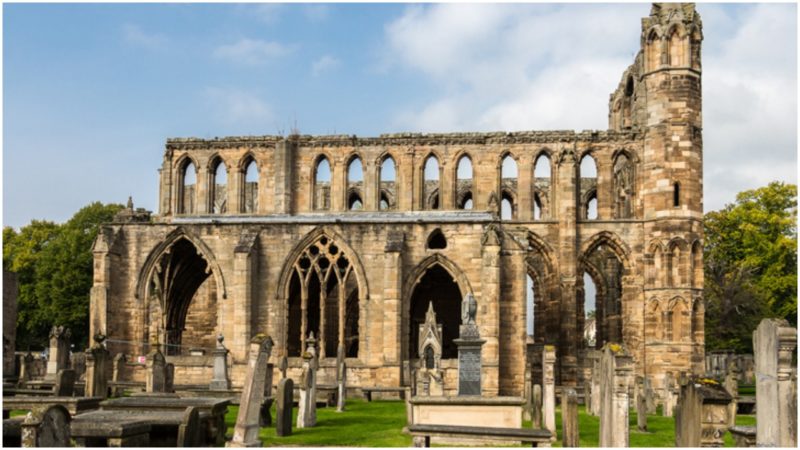Even as ruins, some structures still radiate a divine beauty. Some of them, throughout the centuries, have even acquired prestigious epithets, that speak about them more than their official names. Elgin Cathedral, which is situated in the town of Elgin, Moray, in the northeastern part of Scotland, is known worldwide as the “Lantern of the North.”
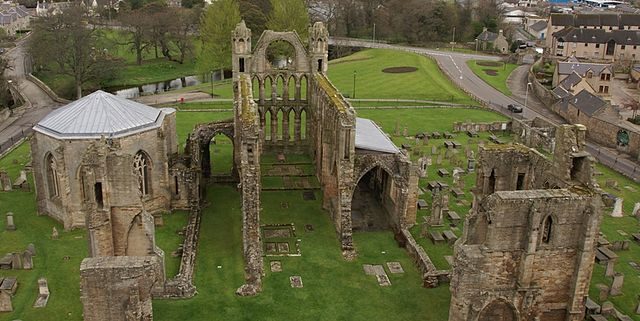
Although it has long been nothing more than a roofless shell of the original structure, the surviving parts with their fine details still stand testament to why this medieval building earned such name. The two magnificent towers of the west front, which at first had spires, and the octagonal chapter house, are practically intact and open for public visits. The tops of the towers provide breathtaking panoramas of the town of Elgin and the surrounding area, as well as a captivating bird’s eye view of the cathedral ruins.
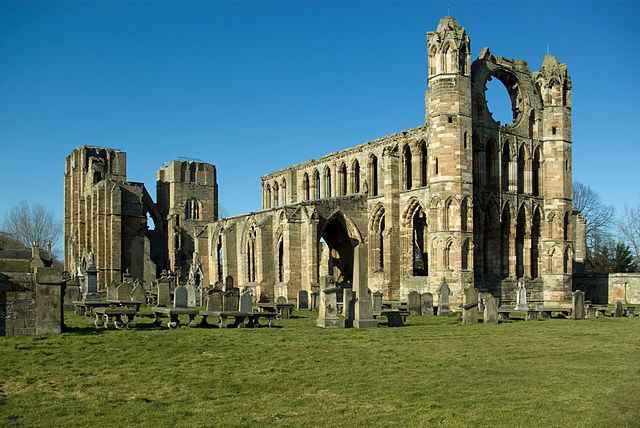
The cathedral is considered as one of the most beautiful medieval structures in Scotland. The site is also deeply connected with important historical events and thus it is very significant to Scottish history and culture. The construction started in 1224 and soon it became the main church of the bishops of Moray. The original cross-shaped church was much smaller than the ruins that can be seen today. A devastating fire in 1270 reduced most of this first structure to ashes. Now parts of the north wall and the south wall of the south transept are remainders of the first phase of the cathedral.
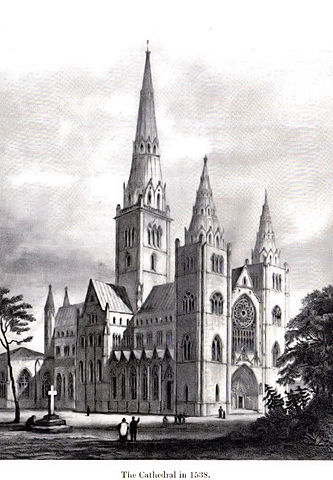
After this tragic event, the cathedral was reborn from its ashes and became larger in size. During the ambitious restoration work, a new choir and octagonal chapter house were erected just near the cathedral. What is fascinating about this unique structure, which is believed by many to be Scotland’s most beautiful octagonal construction, is that on the ornately carved stone vaulted roof can be noticed some traces of gold color. Only this structure survived without any damage during the turbulent events. The chapter house was the place where the clergy had meetings. Later the Elgin tradesmen used it for their meetings.
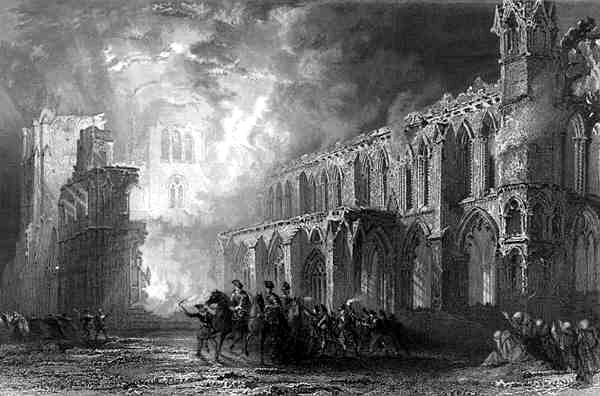
In the Wars of Scottish Independence, the cathedral didn’t suffer at all. But at the end of the 14th century, it was heavily destroyed by a fire during the attack of the forces led by Alexander Stewart (Earl of Buchan), the brother of King Robert III. After this disaster, the damaged portions had to be repaired. The main tower, the central doorway on the west side, the chapter house, and the western gable that connected the towers were put under reconstruction work.
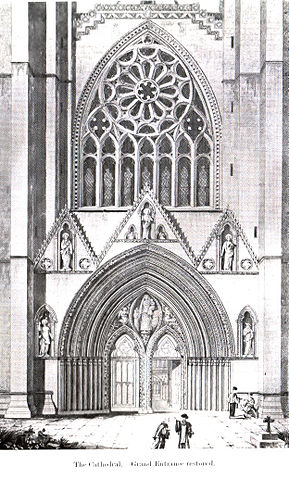
But unfortunately, the cathedral was attacked and set on fire one more time in 1402, when additional damage was done. Several years later it was put under further reconstruction. The evidence of this intervention can be still seen today. The highest rose window on the large sharp-edged arch on the west facade that originally had a chain of windows, is the only surviving rose window in this section. The huge windows in the choir aisles are from this period too.
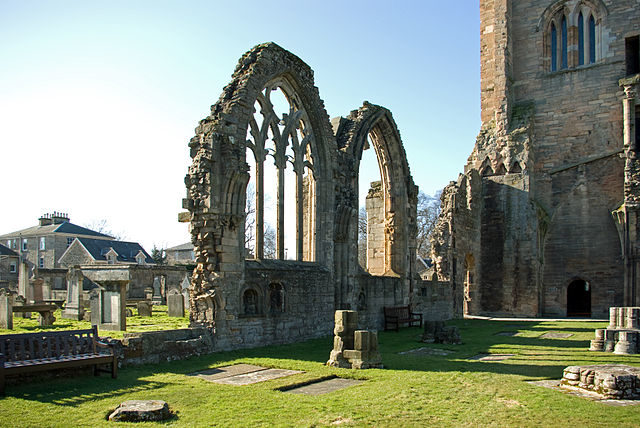
The roof started to fall down after the Protestant Reformation of 1560. First, the lead of the roof and the bells were removed in 1567 and were reused by the army for military purposes. Later, in 1637, when the structure was already in poor condition, the entire roof of the choir collapsed during a storm with very strong winds.
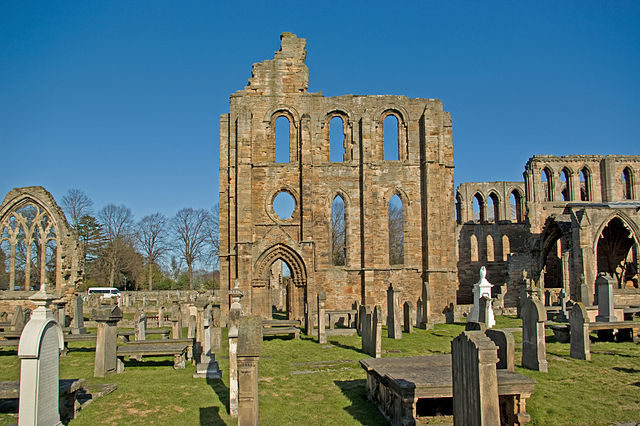
In fact, after the Reformation, the Crown took over ownership of the cathedral, which became collateral damage of the Reformation. According to the laws of this period, the practicing of Catholic rituals in Scotland was forbidden and only a Protestant service was legal. In this period the cathedrals in Scotland stayed alive only if they served as parish churches.
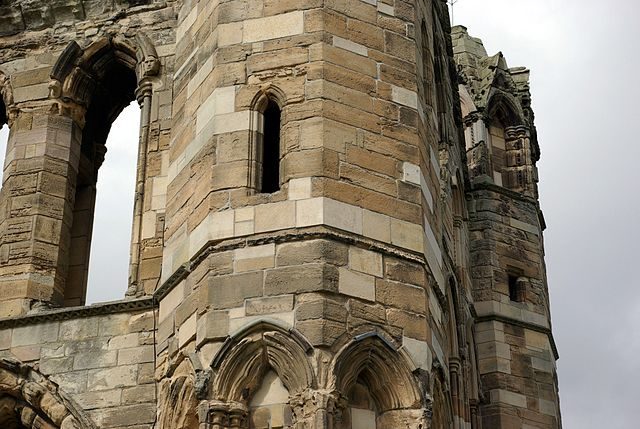
The town of Elgin already had a parish church (St. Giles) and so the cathedral was deserted. At the end of the 16th century, the property was periodically used by the town authorities as a day shelter, which provided aid for the poor, and for some schooling activities. But these activities were not enough reason to start repair work.
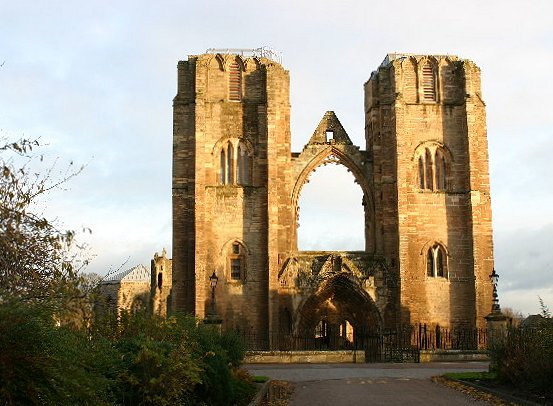
The tragedy for the cathedral continued in the beginning of the 18th century. In 1711, the central tower had the same destiny of the roof and collapsed, destroying a great part of the nave. In this period the locals started to reuse the stone for constructing of other buildings. The rood screen was also taken away and used as a firewood. The grounds started to serve as a cemetery.
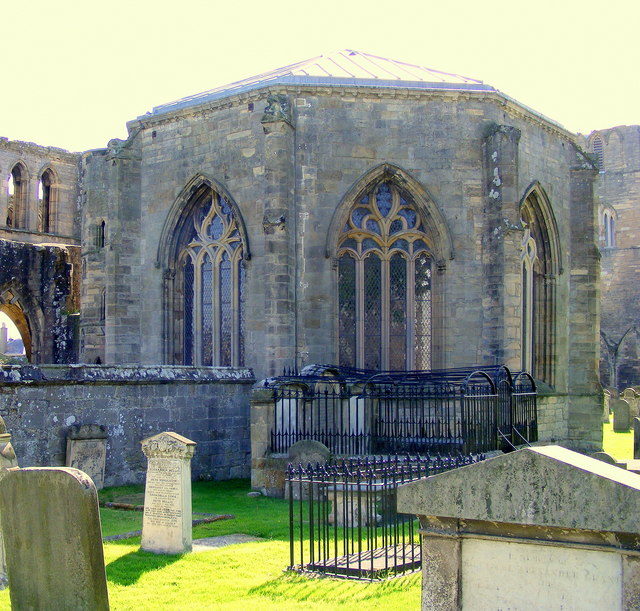
At the beginning of the 19th century, the remains were carefully cleaned, stabilized, and preserved from additional crumbling for the first time. Since then, the site has attracted many visitors. In the last 100 years, several other repairs were done on the site.
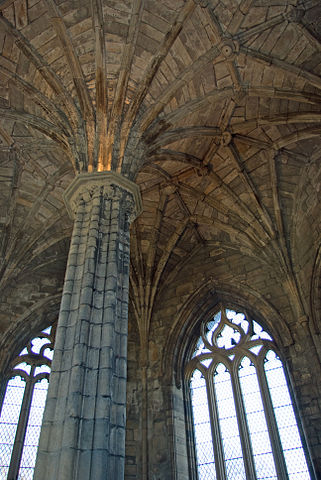
Today the site is a popular tourist destination where the soul of the former life of the cathedral can still be felt. During a certain period there was a colossal wall that encircled the close area around the cathedral, which clearly shows how important was the cathedral in the society. Today only bits of this wall can be recognized.
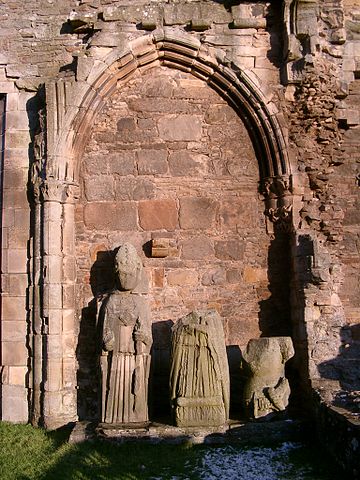
Only three stone figures (one of an ecclesiastic, one of a bishop, and one of a knight) are left from the central tower. These artifacts are put on display in the nave. Several amazing stoneworks of flora and fauna from other parts of the cathedral are also put on show in the towers.
